Awon Museum & Hanok Stay (아원고택)
16.0Km 2025-10-27
516-7 Songgwangsuman-ro, Soyang-myeon, Wanju-gun, Jeonbuk-do
+82-63-241-8195
Awon Museum & Hotel is a beautiful 250-year-old hanok building that was moved from Jinju in Gyeongsangnam-do to Oseong Village at the foot of Jongnamsan Mountain in Wanju, Jeonbuk State. Awon stands out from other hanok buildings in the way it merges traditional hanok with modern architecture and art. The name means "my garden," implying Awon's desire to be a cultural space for all who visit.
O Sung Hanok Village (오성한옥마을)
16.1Km 2024-04-07
Daeheung-ri, Wangju-gun, Jeonbuk-do
+82-63-290-2727
Nestled between Jongnamsan Mountain and Wibongsan Mountain, O Sung Hanok Village has hanok mansion and approximately 20 hanok buildings consisting of cafes, galleries and more. The village also has various experience programs including forest walking trail that provides tradtional and cultural insights. The attraction is also known to visitors for its peaceful setting, bringing in visitors wanting to relax and meditate. Many artists who resides in the village offers gallery views, cafe, bookstore and more. In 2019, BTS stayed in the village for one week to shoot "BTS 2019 SUMMER PACKAGE" music videos and magazine photos. The village consistantly attracts ARMY and regular visitors.
Soyang Hanok Stay (소양고택 한옥스테이)
16.1Km 2024-12-13
472-23 , Songgwangsuman-ro, Wanju-gun, Jeonbuk-do
+82-63-243-5222
Located in Wanju, Jeollabuk-do, Soyang House was renovated as a hanok stay in 2010 following the relocation of three 180-year-old hanok houses in danger of demolition. Seohyeondang is furnished with a red clay ondol room equipped with a bathroom and a space for a tea ceremony, and Gahuidang has a cypress bathtub in the bathroom. In Jewoldang, the daecheong (wooden-floored hall) offers an excellent view of the mountain in front of the hanok, while in Hyeondang, the numaru (balcony-like raised veranda) provides a panoramic view of the entire premises. Breakfast and welcome tea are provided as a complimentary service, but cooking is prohibited. Nearby tourist attractions include Songgwangsa Temple and Oseong Reservoir.
NocWoonJae (녹운재)
16.2Km 2024-12-23
472-18 , Songgwangsuman-ro, Wanju-gun, Jeonbuk-do
+82-10-4450-6565
Nokwoonjae is a guest hanok in Oseong Hanok Village, Wanju-gun, Jeollabuk-do. It comprises two houses built on sloping land - Naunchae above and Unahchae below - with a corridor connecting the two. All rooms are built of timber and red clay - beneficial to both mind and body - and have large windows to let you enjoy natural views and breezes.Toast, jam, and milk are provided for breakfast, and self-catering is possible. Sagunja painting and tea ceremony experiences are offered, while local visitor destinations include Songgwangsa Temple, Wibongsa Temple, the 60m Wibong Falls (one of Wanseon’s ‘Eight Splended Views’) and Jeonju Hanok Village.
Wanju Songgwangsa Temple (송광사(완주))
16.3Km 2024-04-07
255-16, Songgwangsuman-ro, Wanju-gun, Jeonbuk-do
+82-63-243-8091
Songgwangsa Temple in Wanju-gun, Jeollabuk-do has a unique history that spans a period of over a thousand years. For many years the temple lay incomplete until Monk Bojo Chejing began reconstruction in the 7th year of King Gyeongmun of Silla (AD 867). The temple was destroyed at one point in time, but Master Monk Jinul prayed that it be rebuilt. In accordance with his fervent hopes, in the 1600s the monk’s followers rebuilt a number of the temple’s halls and buildings, many of which can still be seen today. The temple is also remembered as the temple that King Injo helped rebuild with the hope that his two sons, who had been taken hostage by the Qing dynasty during the Byeongjahoran War (Chinese invasion of Korea in 1636), would be returned safely and that Buddha would heal the nation.
One of the Korea’s four major temples, Songgwangsa is home to Jijangbosal and Siwangsang statues (found in Jijangjeon Hall), a Seokgayeorae statue, and 500 Nahansang statues (found in Nahanjeon Hall). The temple is also home to eight Tangible Cultural Assets and four Treasured Cultural Assets: Daeungjeon Hall, the Samsebulsang statues, the bell-tower, and the Sacheonwangsang statue.
Beloved for its historical significance as well as its beauty, the temple draws throngs of worshipers throughout the year. In spring, many tourists flock to the area to explore the temple and walk through the nearby cherry blossom tunnels. A worthwhile attraction for visitors of all ages, the temple is particularly well-suited for those with mobility problems since it is located on ground level.
Gosan Changpo Village (창포마을)
17.8Km 2025-10-23
385 Daeajeosu-ro Gosan-myeon, Wanju-gun, Jeollabuk-do
Since there is a colony of irises (Changpo), it is a quiet rural village that produces traditional handmade products using irises. Various experiences such as making natural shampoo and soap are available. It is essential to take a picture in a pose like a pictorial at the rustic concrete bridge where the BTS members sat, and the old shop Yongam Sanghoe where you can feel the years.
Geumsan Boseoksa Temple (보석사 (금산))
18.1Km 2021-11-29
30, Boseoksa 1-gil, Geumsan-gun, Chungcheongnam-do
+82-41-753-1523
Located on the southeastern slope of Jinaksan Mountain (732 meters), about six kilometers away from Geumsan-eup, Boseoksa Temple was founded by the great Buddhist monk Jogu Daesa in 866 (12th year of King Heongang) during the Silla Kingdom. The temple’s name Boseoksa (boseok meaning jewelry) comes from the statue of Buddha in the temple that was cast from gold found in the mountain facing the temple.
The temple is comprised of Daeungjeon Hall, Euiseongak Shrine and Sansingak Shrine. Close to the temple grounds are 12 stunning waterfalls. Visitors can also see a 1,100 year-old ginkgo tree or take a pleasant stroll along a 300-meter long fir tree road.
Gosan Recreational Forest (고산자연휴양림)
18.5Km 2024-04-07
246, Gosanhyuyangnim-ro, Wanju-gun, Jeonbuk-do
+82-63-263-8680
Located in Osan-ri, Gosan Recreational Forest is a popular family destination throughout all four seasons. Full of thick groves of larch trees, Korean white pines, rigida pines, and plenty of broad-leaved trees, the forest and its streams offer a cool and refreshing retreat. In spring, the forest is beautiful with wildflowers, azaleas and wild cherry blossom trees. In summer, families flock to the streams shaded by the thick forest canopy. As summer turns into fall, the whole area transforms into a rainbow of bright yellow, red, and orange. With the coming of winter, the snow covers the trees and blankets the ground, turning the forest in a winter dreamland.
Nami Recreational Forest (남이자연휴양림)
18.6Km 2021-03-05
200, Neutigol-gil, Geumsan-gun, Chungcheongnam-do
+82-41-753-5706
Nami Recreational Forest is the perfect place for leisure activities and family outings. The forest boasts a picture-perfect view of thick, green forests of broadleaf trees, crystal clear water, curiously shaped rocks, and waterfalls. The cliffs and rocks of Daedunsan Mountain are visible from the summit of Seonyabong Peak.
Near the forest are diverse cultural heritage sites such as Baengnyeong Holy Ground and Yukbaekgoji Victory Tower. Nami Recreational Forest provides visitors with a unique combination of cultural sites and natural beauty, making it a popular destination among visitors.
Happydream (행복드림한옥)
19.2Km 2024-08-05
181-21 , Bongseoan-gil, Wanju-gun, Jeonbuk-do
+82-63-247-0050, +82-10-3677-5339
Dueok Happydream Village is located in Bongseo-gol, Wanju-gun, Jeollabuk-do - a location said to be one of the most propitious in Korea, owing to the surrounding mountains’ resemblance to the Bonghwang mythical bird. The guesthouse’s tile-roofed buildings are set in a wide grassy yard against a background of green mountains. As well as accomodation the village operates various nature and traditional culture experience programs, some of which take place at the guesthouse. The rooms are small but clean and comfy, and with the doors open offer scenic views.
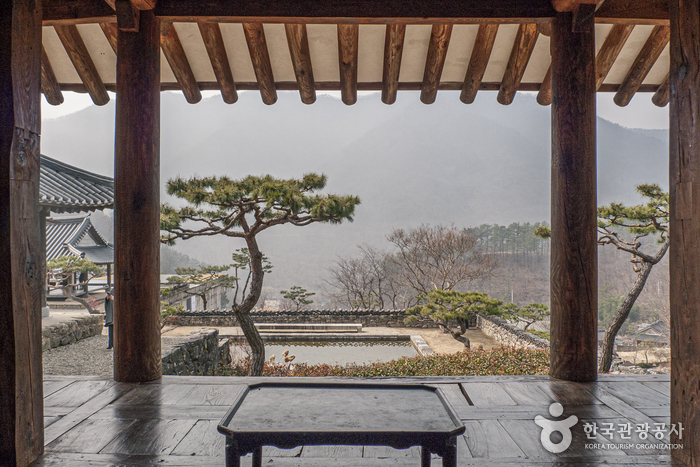

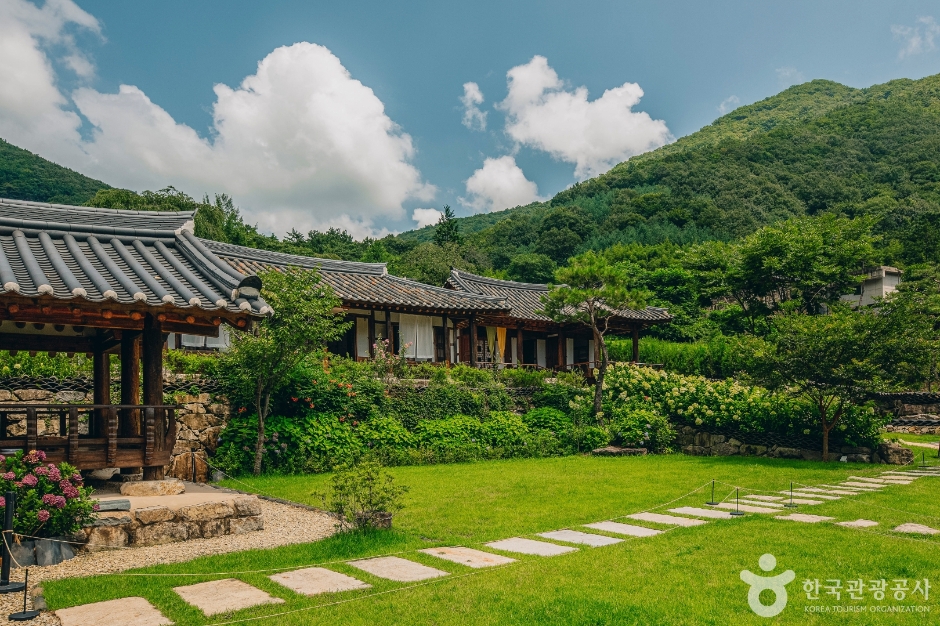
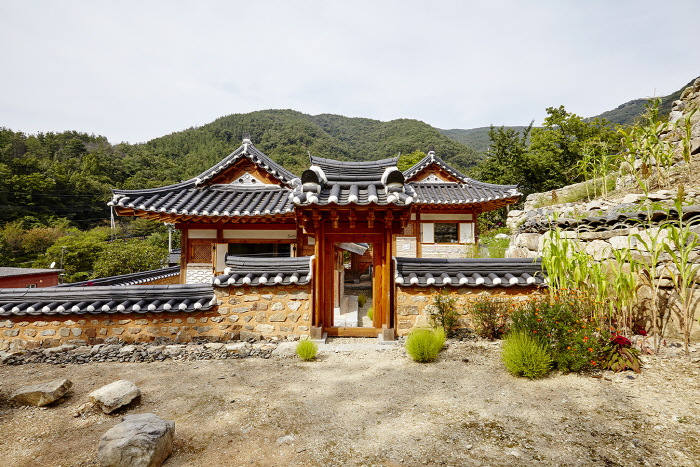
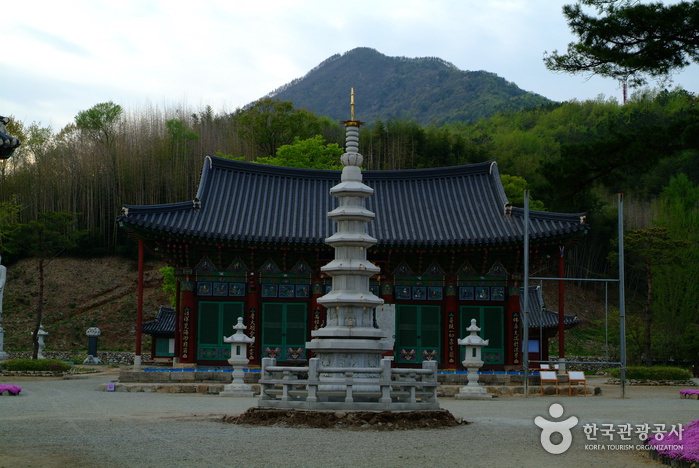
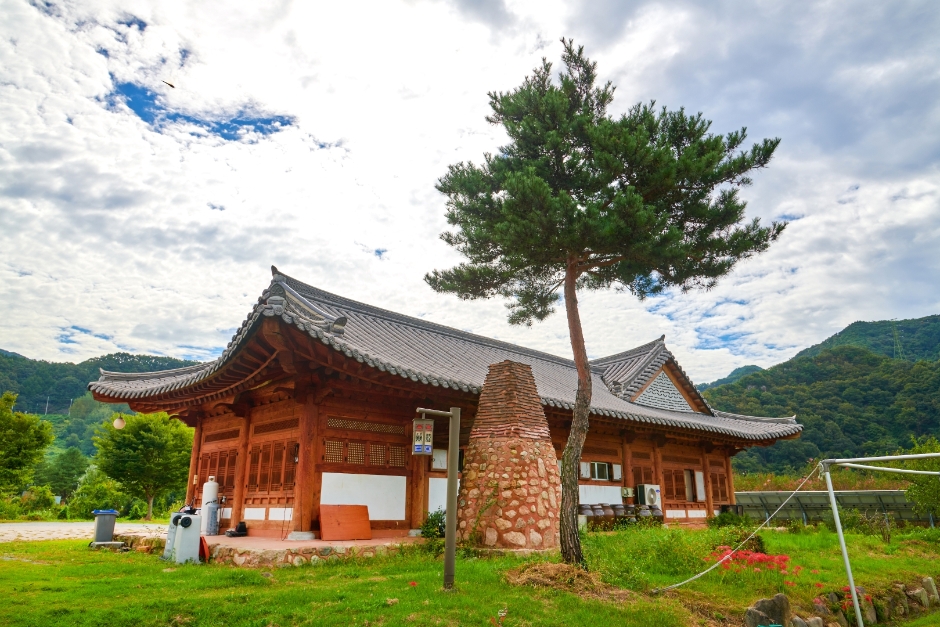
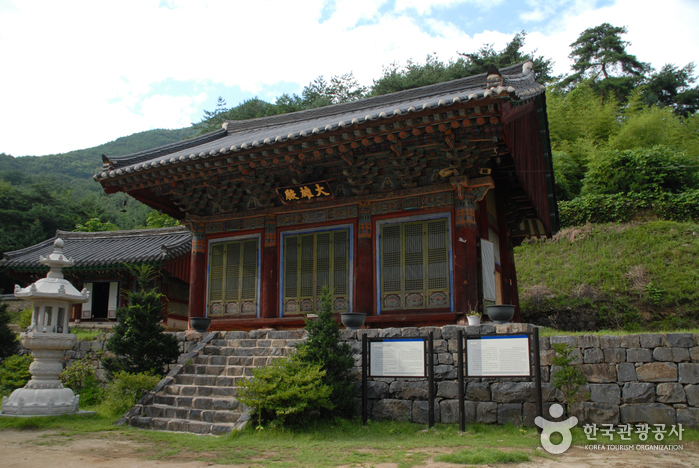
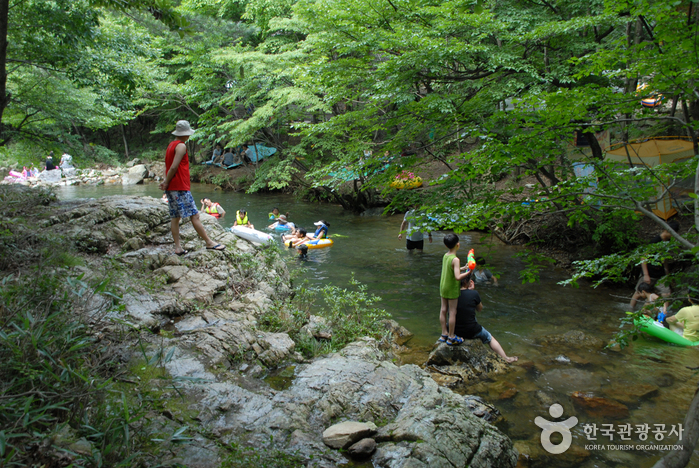
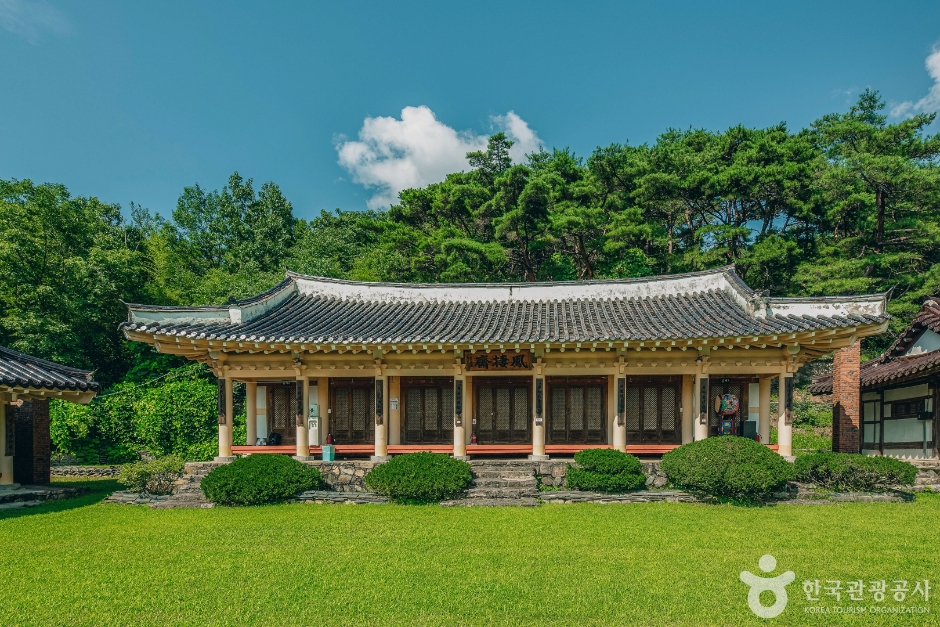
 English
English
 한국어
한국어 日本語
日本語 中文(简体)
中文(简体) Deutsch
Deutsch Français
Français Español
Español Русский
Русский